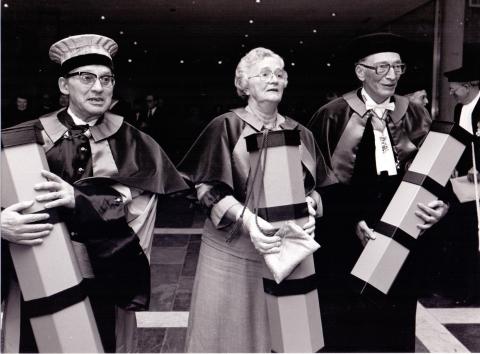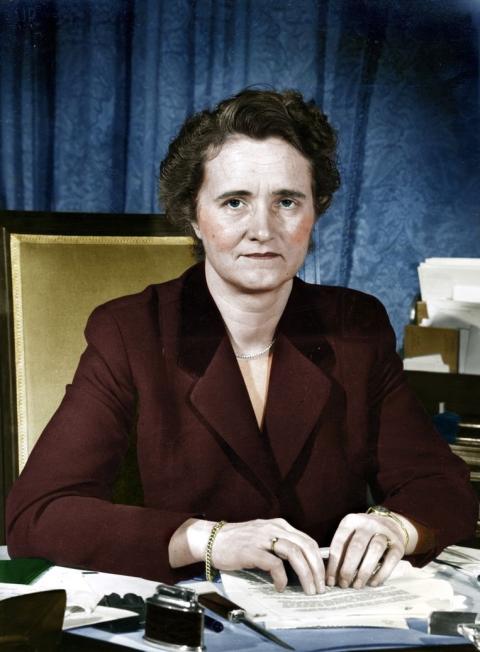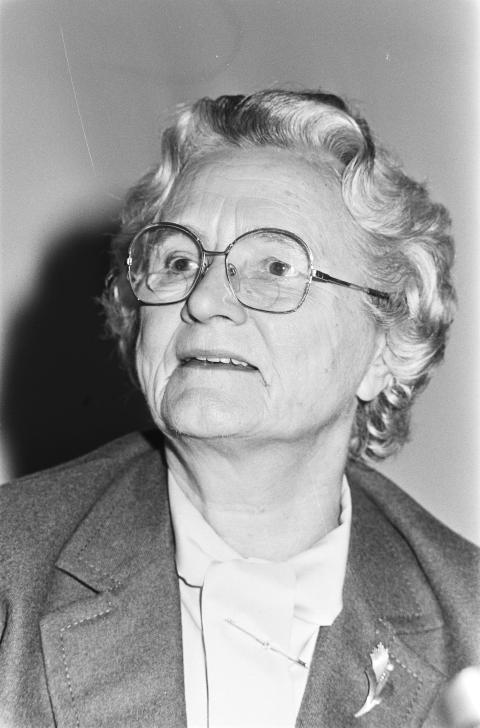Marga Klompé Building
Marga Klompé building is based on the principles of circular building. Designed by Powerhouse Company and named in honor of the first woman Cabinet Minister of the Netherlands, Marga Klompé (1912-1986).
Circularity
Marga Klompé building was inaugurated on January 29, 2024. Students can now attend lectures there and use the study and meeting facilities. The largest of the fourteen lecture halls seats 450. Right from the project’s inception, it was clear: the sustainability ambitions were sky-high. Architect Powerhouse Company accepted this challenge, which has led to a BREEAM Outstanding sustainability certificate. BREEAM (Building Research Establishment's Environmental Assessment Method) is an environmental assessment method for buildings, whereby an outstanding rating is the highest level. This makes Marga Klompé building an exemplary project in the field of sustainable design and construction.
Circularity was an important design principle. Circular building is the sustainable development, use, and reuse of a building, avoiding any unnecessary depletion of natural resources and damage to the environment and ecosystems. An important aspect of this was the choice for a wooden main load-bearing structure. Processing timber is much more sustainable than the use of steel or concrete, and it is a renewable material. The prominence given to timber and natural light in the building also provides an inviting appearance. The building is heated and cooled without gas or district heating, and almost all electricity the building needs is generated by solar panels on its roof. Learn more here about everything that makes the building future-proof.
Design
Even though the building is brand new and equipped with state-of-the-art technology, the observant viewer will see a nod to the past in the design. Powerhouse Company’s architects were inspired by the work of Jos. Bedaux, notably Cobbenhagen and Koopmans buildings, that gives the campus its iconic appeal. Marga Klompé building’s natural stone facade and the focus on natural light are reminiscent of Cobbenhagen building.
Marga Klompé
It is not a coincidence that a building in which the future is considered in such a courageous and forward-thinking way has been named in honor of Marga Klompé. She was a pioneer, she broke old patterns, and continues to be an example to many. As one of the architects of the Dutch welfare state, Marga Klompé’s work and the causes she was committed to link up perfectly with Tilburg University vision of ‘Broad prosperity for everyone’. For her invaluable service to society, the then Tilburg Catholic Academy – now Tilburg University – awarded her an honorary doctorate in 1982.

Marga Klompé was born in Arnhem on August 16, 1912, and grew up in an observant Catholic family. She began her academic journey at Utrecht University, where she studied chemistry and obtained a PhD in Math in 1941. Her early years were marked by poverty, when her father became ill and the family fell on hard times. Her mother was determined not to accept charity from the church, which had a defining influence on Marga Klompé’s later commitment to social justice. She felt it was important that people like her mother should be able to appeal to the government for support without feeling ashamed.
The Second World War was a turning point in her life. She was actively involved in the Resistance as a courier, a period of personal courage and social involvement that also characterized her later commitment to an equitable society. In her twenties, Marga Klompé started to question certain aspects of the faith that she had been brought up in. Her faith ultimately played a central role in her life, and she retained a deep respect for other belief systems.
Her political career started on August 12, 1948, when she became a member of the Catholic People's Party (KVP), founded a few years earlier. In 1956, she wrote history when she became the first woman Cabinet Minister of the Netherlands, at the Ministry of Social Work. The year 1963 marked the adoption of the Social Assistance Act (Algemene Bijstandswet), with policy that focused not only on alleviating poverty in the short term but also on structural changes for a sustainable society in the long term. As the Minister of Social Work, she defended her Social Assistance Act with the following words: “I hope every citizen will realize that they can claim benefit under this Act with their head held high.”


After her political career, Marga Klompé devoted her life to the Dutch branch of the Pontifical Council for Justice and Peace, established in 1967 after the Second Vatican Council. As the first woman Minister of State (an honorary title) in 1971, and earlier as a member of the Council of Europe (1949-1956) and the European Coal and Steel Community (ECSC, 1952-1956), she continued to be internationally active. She was involved in social issues like elderly care, refugees, and poverty relief, and she continued to fight against apartheid in South Africa.
Marga Klompé passed away in The Hague on October 28, 1986. May the vision and values of Marga Klompé continue to inspire on campus.
More about history and academic heritage
The Tilburg University academic heritage is a very diverse set of archives, visual materials, collections, devices, recorded stories, et cetera that relate to the history of the university.
